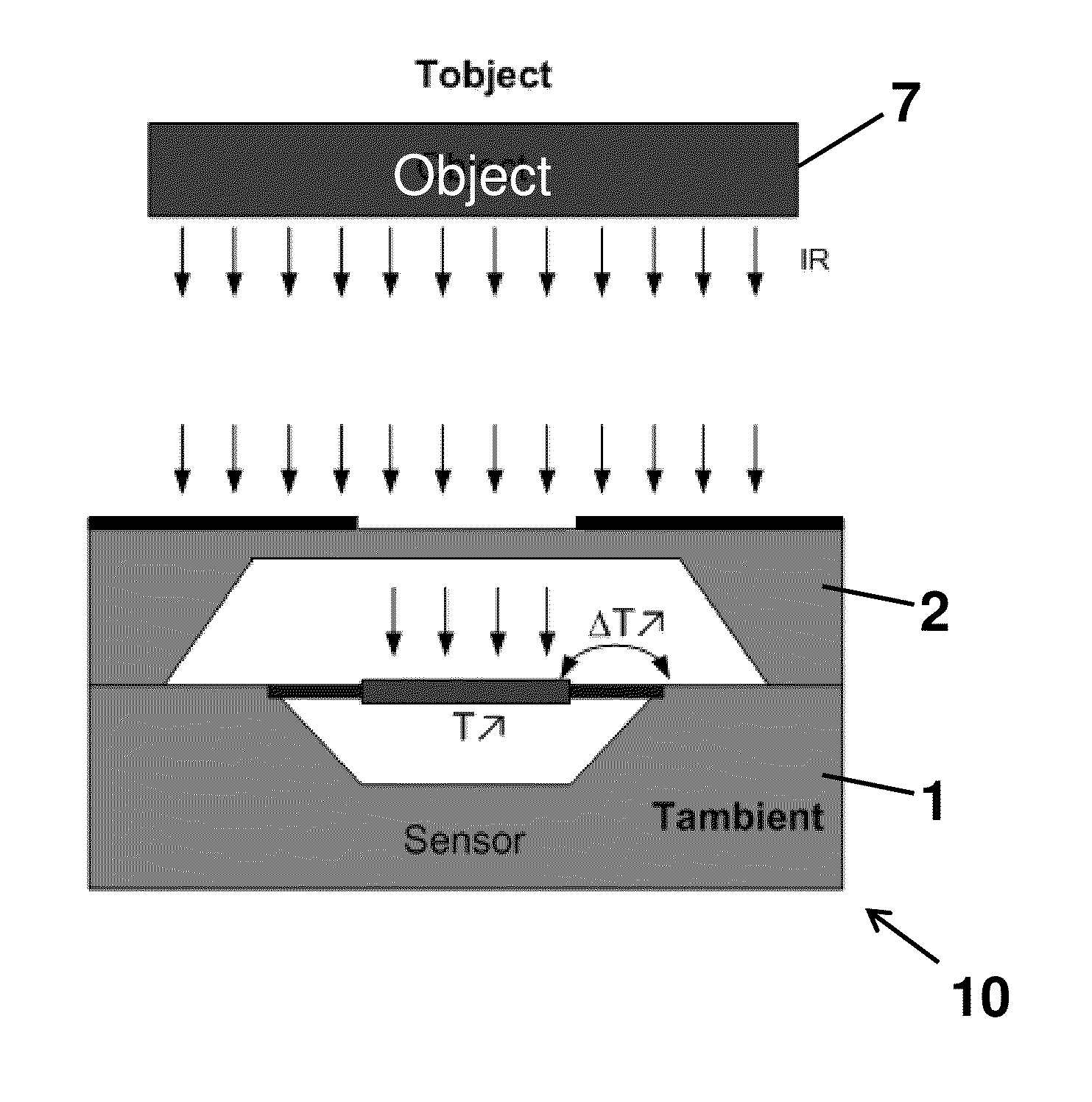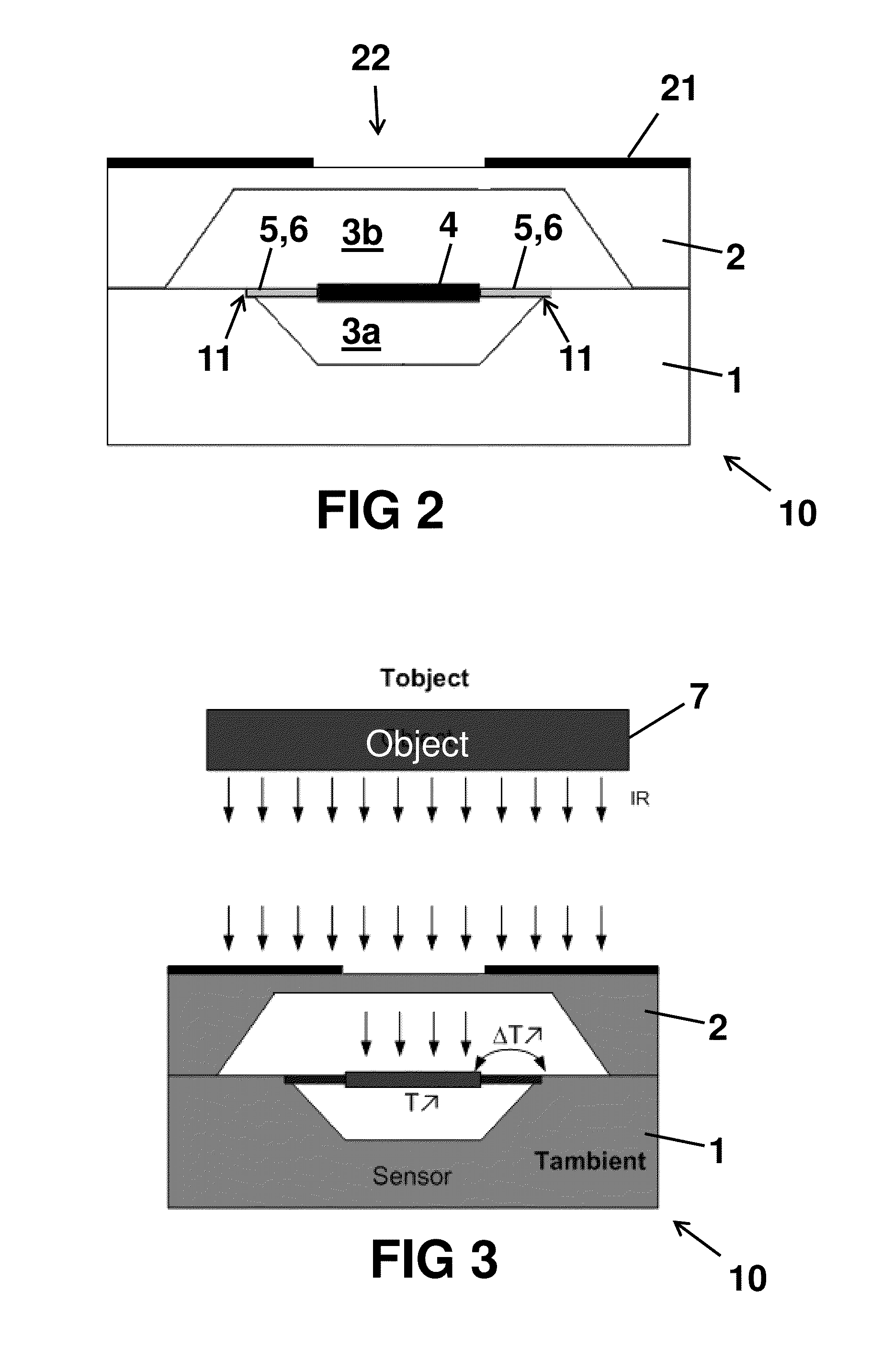Infrared thermal sensor with good snr
- Summary
- Abstract
- Description
- Claims
- Application Information
AI Technical Summary
Benefits of technology
Problems solved by technology
Method used
Image
Examples
case 1 (
[0107small number of thermocouples): it is assumed that the thermal conduction of the air is dominant, that all the heat is lost through the air, and no heat is lost through the thermocouples. In this case, thermocouples can be added to the design without changing the temperature difference ΔT between the membrane and the silicon bulk. Since all the heat is lost through the air, adding or removing thermocouples will not change the temperature of the membrane. Thermocouples can be added as long as the thermal conduction of the air is dominant. From the moment that the thermal conduction through the air is not dominant anymore, the thermal conduction through the thermocouples will play a role and then this reasoning is not correct anymore. In that case, the temperature on the membrane will change when a thermocouple is added, since the thermal resistance from the membrane to the bulk is changed.
case 2 (
[0108large number N of thermocouples): it is assumed that the thermal conduction of the thermocouples is now dominant, that all the heat is lost through the N thermocouples, and that the heat loss through the air is negligible. Since all the heat is conducted through the N thermocouples, the thermal resistance between the membrane and the bulk increases proportional with the number of removed thermocouples. The temperature therefore also increases proportional with the number of removed thermocouples. This reasoning is true as long as the thermal conduction is dominated by the beams. When the thermal conduction is not dominated by the beams anymore, removing beams will not decrease the temperature anymore, because some heat is conducting through the air.
[0109]Looking at case 1 and case 2 it can be understood that there is an optimum somewhere between these two extremes. One might think that the optimum is reached where the heat dissipation through the beams (here: beam material+ther...
PUM
| Property | Measurement | Unit |
|---|---|---|
| Fraction | aaaaa | aaaaa |
| Pressure | aaaaa | aaaaa |
| Pressure | aaaaa | aaaaa |
Abstract
Description
Claims
Application Information
 Login to View More
Login to View More - Generate Ideas
- Intellectual Property
- Life Sciences
- Materials
- Tech Scout
- Unparalleled Data Quality
- Higher Quality Content
- 60% Fewer Hallucinations
Browse by: Latest US Patents, China's latest patents, Technical Efficacy Thesaurus, Application Domain, Technology Topic, Popular Technical Reports.
© 2025 PatSnap. All rights reserved.Legal|Privacy policy|Modern Slavery Act Transparency Statement|Sitemap|About US| Contact US: help@patsnap.com



